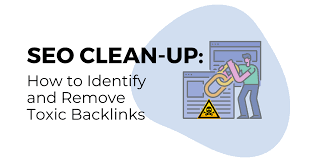Methods to Combat Harmful Backlinks
Toxic backlinks are links from low-quality or spammy websites that can harm your site’s credibility and search engine rankings. These backlinks can result from various factors, including:
Link Farms: Websites that exist solely to create a large number of backlinks to other sites, usually of low quality.
Irrelevant Sites: Websites with no relevance to the content or industry of your site.
Paid Links: Purchasing backlinks from dubious sources can lead to penalties from search engines.
Spammy Content: Links from sites that feature spammy, adult, or illegal content.
Over-optimized Anchor Text: If too many backlinks use the same exact match keywords as anchor text, it can signal manipulation to search engines.
When search engines, like Google, detect toxic backlinks pointing to your site, they may penalize your site, leading to lower rankings and reduced visibility.
Techniques for Spotting Negative Backlinks
Identifying toxic backlinks is the first step in protecting your site’s SEO health. Here are some common signs of toxic backlinks:
Low Domain Authority: Use tools like Moz or Ahrefs to check the domain authority of sites linking to you. Links from sites with low authority (usually below 20) may be considered toxic.
Irrelevant Websites: If the linking website has little to no relevance to your niche, that backlink may be harmful.
Spam Score: Many SEO tools offer a spam score metric. A high spam score indicates a higher likelihood of toxicity.
Unnatural Link Patterns: A sudden spike in backlinks or a pattern that looks manipulated can raise red flags.
Manual Penalties: Check Google Search Console for any manual actions against your site, which could be related to toxic backlinks.
How to Remove Toxic Backlinks
Once you’ve identified toxic backlinks, it’s essential to take action to remove or disavow them. Here’s how:
Contact Webmasters: Start by reaching out to the webmasters of the sites hosting the toxic backlinks. Politely request the removal of your link. Provide details about the specific link and where it’s located.
Use the Disavow Tool: If you cannot get the link removed, you can use Google’s Disavow Tool. Backlinks can be ignored by Google using this tool. To use it:
- Create a text file listing the URLs or domains you want to disavow.
- Visit the Google Disavow Tool and upload your file.
- This process doesn’t guarantee immediate improvement, but it helps in cleaning up your backlink profile.
Monitor Your Backlink Profile: Regularly check your backlink profile using tools like Ahrefs, SEMrush, or Moz to identify and address toxic backlinks promptly.
Strengthen Your Backlink Profile: Focus on building high-quality backlinks from authoritative and relevant sources to dilute the impact of any toxic links that remain.
Conclusion
Toxic backlinks pose a significant threat to your site’s SEO health, but with proactive measures, you can protect your site from penalties and maintain your rankings. Regularly auditing your backlink profile and taking necessary actions against toxic links can keep your website on the right track. Remember, a healthy backlink profile is a vital part of a successful SEO strategy, so don’t overlook it!

